If you have a printer, before you begin print out this page!
Step 1:
Open up the start menu, and click Run. You should now see the following window.
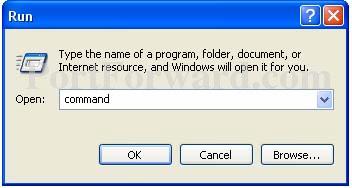
Step 2:
Type cmd in the Open: box, and click Okay. The will bring up a black command prompt window.
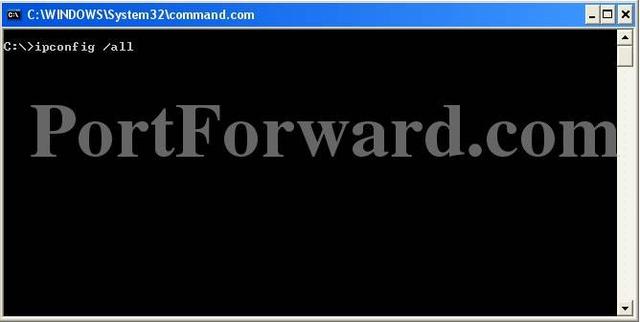
Step 3:
The command prompt may look different on your screen, but it doesn't really matter. Type ipconfig /all in that window, and
then press the enter key. This will display a lot of information. If it scrolls off the top you may need to enlarge the window.
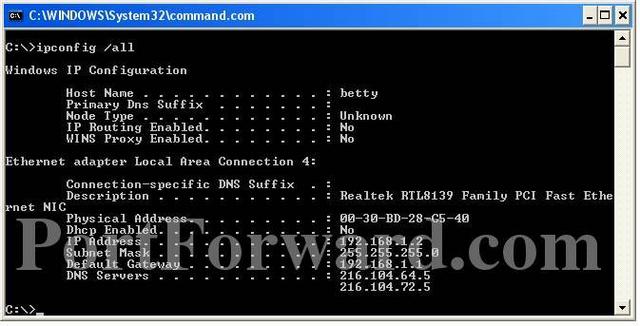
Step 4:
I want you to write down some of the information in this window. Take down the IP address, Subnet Mask, Default Gateway, and Name Servers.
Make sure to note which is which. We are going to use this information a little bit later.
The name server entries are a bit complicated. Name Server is just another name for DNS(domain name server) server.
Some router's act as a proxy between the actual name servers and your computer.
You will know when this is the case, because the Default Gateway will list the same ip address as the Name Servers entry.
We need to have the correct Name Server IP addresses. If we do not, you will not be able to browse the web. There
are a couple ways to get these. The first way is to log into your router's web interface, and look at your router's
status page. On that page you should see an entry for DNS Servers, or Name Servers. Write down the ip adresses of your
Name Servers. Another way to get the correct Name Servers to use, is to give your ISP a call. They should know
the ip addresses of your Name Servers right off. If they ask you why you need them, you can tell them you are trying to
setup a static IP address on your computer. If they try to sell you a static external ip address, don't buy it. That's
an entirely different thing that what you are trying to setup.
Type exit in this window, then press the enter key to close it.
Step 5:
Once again open the start menu. This time click Control Panel.
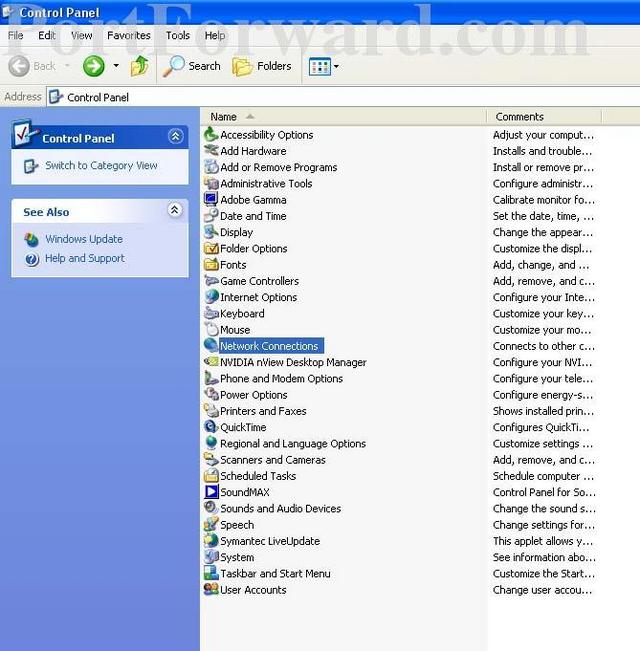
Step 6:
Double click Network Connections.
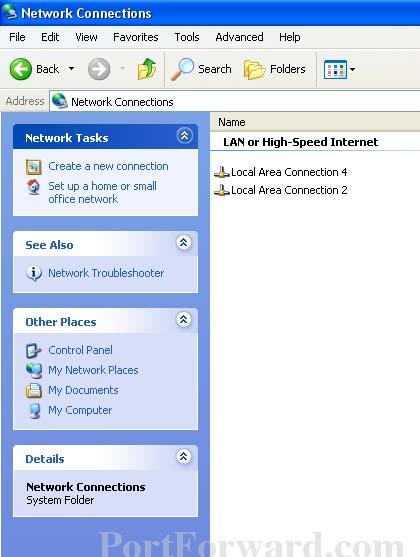
Step 7:
You may have several network connections in this window. I want you to right click on the one you use to connect to the internet. Then click
properties.
If you are unsure of which one that is, right click it and then click disable. Open a new copy of your web browser?
Did it open a webpage? If you can not, then you've found your internet connection. Close that browser window.
Go ahead and right click the network connection again and then click enable. Once again open up a new web browser. You should see a webpage.
Close the browser window. Right click on the network connection and click properties at the bottom.
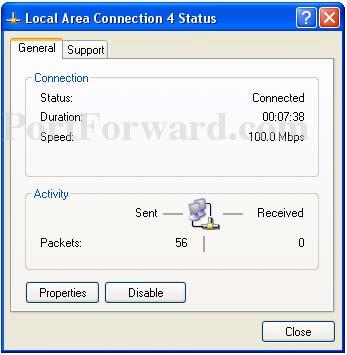
Step 8:
You should now have the above window on your screen. Click the properties button to open up the properties window of this internet connection.
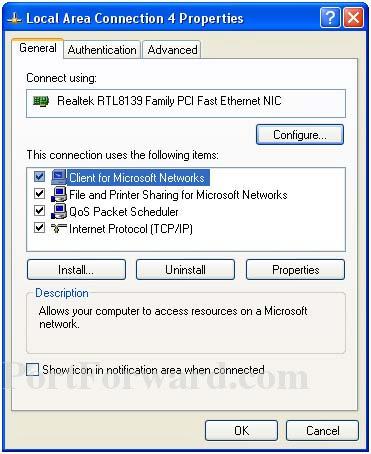
Step 9:
Click Internet Protocol(TCP/IP) and then the Properties button. You will now see the following screen.
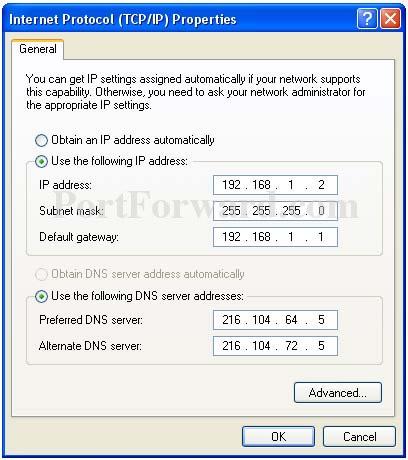
Step 10:
Before you make any changes, write down the settings that you see on this page. If something goes wrong you can always change the settings back
to what they were!
You should see a dot in the Obtain an IP address automatically box.
If you do not, your connection is already setup for a static ip. Just close all these windows and you are done.
I realize this guide is fairly difficult to understand, so I've added a new section here that will help you determine exactly what
ip address to set your computer to.